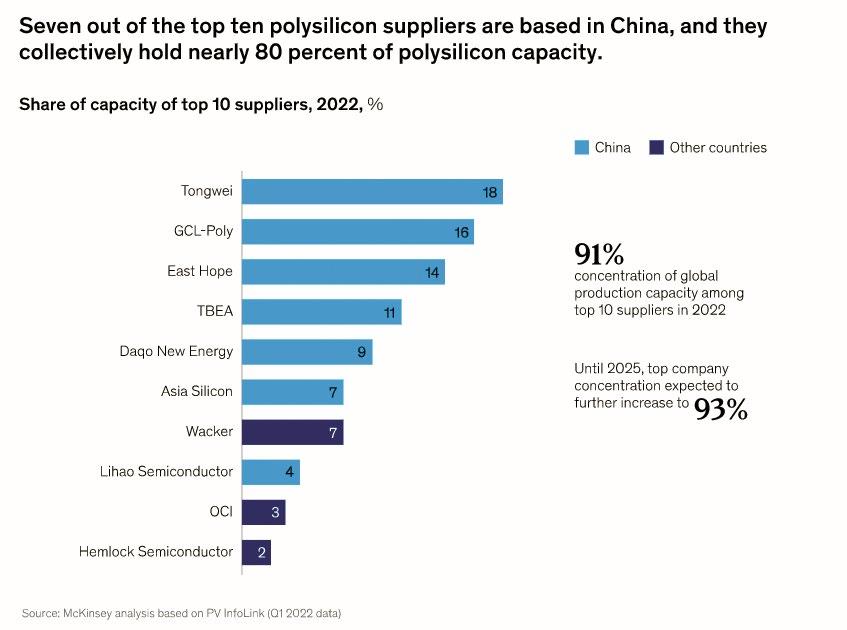
1 minute read
DECARBONISATION
Renewables developers and OEMs will have to tackle several challenges in order to mitigate risk and build a more resilient supply chain. Renewables developers face three core supply chain challenges. In today’s volatile conditions, renewables developers and OEMs will have to tackle several challenges in order to mitigate risk and build a more resilient supply chain.
Securing Access To Raw Materials And Rare Earth Metals At Stable Prices
Advertisement
The commodity squeeze challenging the wind and solar industries will only get tighter as demand increases from global decarbonization efforts. The rare earth metals neodymium and praseodymium, for example, are needed as high-power magnets in both wind turbine generators and electric vehicles. Yet McKinsey estimates that these materials will face a 50–60 percent shortage in 2030.7 Recycling will play an increasingly important role but is expected to meet only 10 percent of total demand. Green steel offers another example. Environmental, social, and governance (ESG) requirements are driving up wind and solar industries’ interest in steel produced with minimal or zero CO2. But ramping up production of steel with hydrogen instead of fossil fuels faces multiple hurdles. The construction of new large-scale facilities often involves lengthy efforts to obtain subsidies and to design and develop unique equipment. In parallel, steel producers have to install capital-intensive electrolyzers or secure hydrogen supply through (long-term) contracts. On top of that, significant infrastructure developments are required, such as the construction of a network of pipelines to transport large quantities of H2.
Scaling Manufacturing Capacity To Meet Regional Demand
The growing demand for renewables has been pushing up factory utilization rates in the industry. Unless additional capacity is added, this can make supply chains more vulnerable to unplanned events. The COVID-19 lockdowns, factory accidents, and floods that affected poly-silicon manufacturing, for instance, have helped increase capacity utilization rates to 100–110 percent since 2020, causing shortages and price hikes.8 Across renewables supply chains, extensive investments are needed to grow capacities in line with demand and avoid large-scale imbalances between supply and demand. In addition, the dominance of one region and the relatively small number of suppliers weaken the resilience of renewables supply chains. In the case of polysilicon, 79 percent of global capacity is located in China, and half of that is concentrated in the province of Xinjiang, making wind and solar players across the globe especially vulnerable to disruptions in this area. Additionally, the top ten suppliers of polysilicon, only three of which are outside China, have a total capacity of more than 90 percent of global capacity (Exhibit 3). The fact that many of these suppliers have announced capacity expansions in recent years will likely only boost their share of the market.







